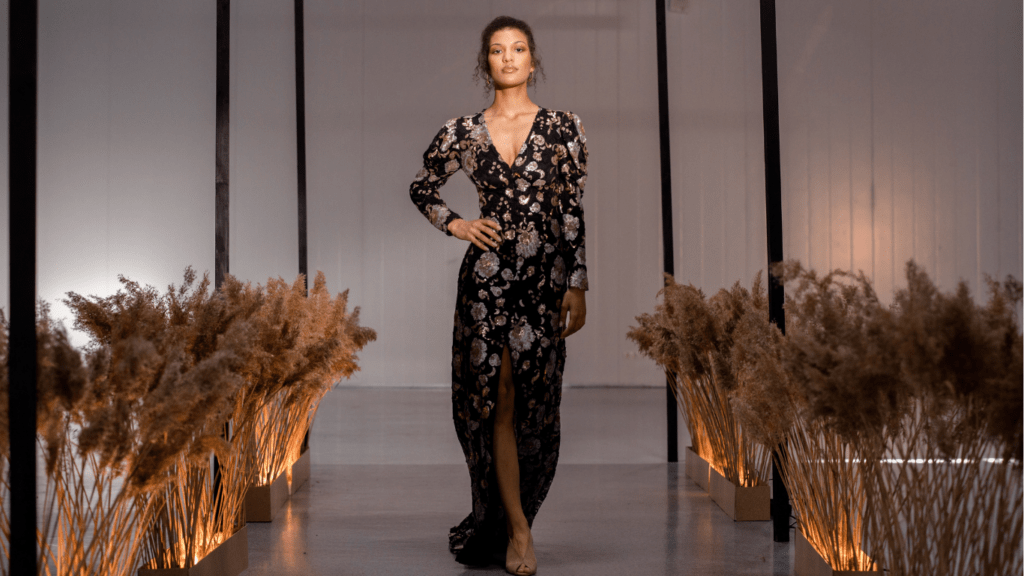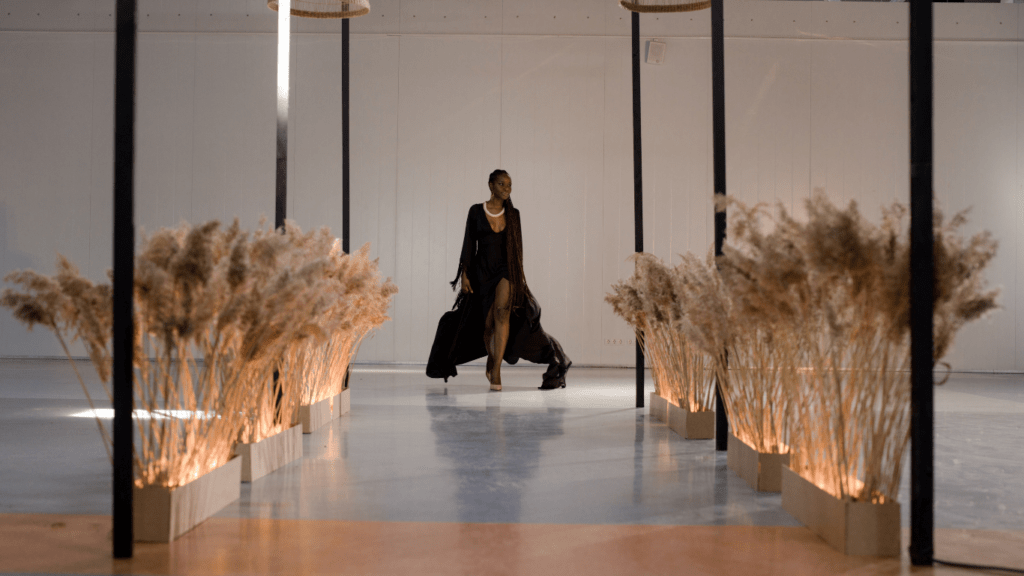Yves Saint Laurent: The Intersection Of Fashion And Art
Yves Saint Laurent revolutionized fashion by intertwining it with art. His designs showcased influences from prominent art movements including Impressionism, Cubism, and Pop Art. Each collection was a visual homage to artists like Mondrian, Picasso, and Warhol.
His 1965 Mondrian collection epitomized this blend. He featured dresses with a graphic structure and bold colors directly inspired by Piet Mondrian’s artworks. These dresses became iconic, symbolizing the perfect synthesis of art and couture.
Saint Laurent didn’t stop at painting-inspired designs. Runway shows also incorporated artistic elements. He collaborated with contemporary artists to create immersive experiences. His 1980 collection exemplified this, using surrealistic elements inspired by Salvador Dalí. He transformed traditional fashion shows into artistic performances that delighted and amazed audiences.
The designer’s atelier operated like an artist’s studio. He treated fabric as a canvas, using colors, patterns, and textures innovatively. He redefined the boundaries of fashion design, approaching it as an art form rather than mere garment creation.
Fashion critics and art historians alike have praised Saint Laurent’s contributions. They recognize his work for its bold creativity and artistic integration. His legacy endures, influencing new generations of designers who view fashion as a platform for artistic expression.
In the world of fashion, Yves Saint Laurent stands as a paragon of the seamless marriage between fashion and art, leaving an indelible mark that continues to inspire and captivate.
Early Life And Career
Yves Saint Laurent, born in Oran, Algeria, began his journey in fashion at a young age. By 17, he moved to Paris and enrolled at the Chambre Syndicale de la Haute Couture.
Inspirations And Influences
Saint Laurent admired Christian Dior and won first prize in the International Wool Secretariat competition in 1954. Dior hired him shortly after, shaping his early style. Other influences included his love for literature and art, drawing inspiration from authors like Marcel Proust, and artists like Pablo Picasso.
Rise In The Fashion Industry
Saint Laurent’s career accelerated when Dior passed away in 1957, and Dior’s directors named him artistic director. He introduced the “trapeze dress,” which diverged from the strict silhouettes of the earlier era. Founding his fashion house in 1961, Saint Laurent set trends with the “Le Smoking” tuxedo suit for women and the Mondrian dress, solidifying his status as an icon.
Revolutionary Designs

Yves Saint Laurent’s designs broke new ground in fashion by merging art and innovation. His collections and styles continue to influence designers.
Iconic Collections
Saint Laurent’s Mondrian Collection (1965) transformed Piet Mondrian’s abstract paintings into geometric dresses, showcasing bold colors and shapes. The Ballets Russes Collection (1976) drew from Russian folklore, using rich fabrics and intricate patterns. The Pop Art Collection (1966) incorporated motifs from contemporary artists like Andy Warhol, blending high fashion with modern art sensibilities. Each collection featured meticulous craftsmanship and a keen sense of artistic vision.
Signature Styles
Saint Laurent introduced signature styles that redefined gender norms and fashion aesthetics.
- The “Le Smoking” tuxedo suit (1966) challenged traditional feminine attire, offering women a chic, tailored alternative.
- Safari jackets and see-through blouses blurred the lines between masculine and feminine designs, promoting versatility and elegance.
- His Rive Gauche line democratized high fashion, making it accessible to a broader audience without diminishing its artistic value.
Artistic Collaborations
Yves Saint Laurent often partnered with influential artists to create groundbreaking designs. These collaborations bridged the worlds of fashion and art.
Partnerships With Artists
Saint Laurent collaborated with prominent artists to infuse contemporary art into his collections. In 1965, harnessing the creativity of Piet Mondrian’s abstract compositions, he designed a series of shift dresses featuring bold geometric patterns. Working with Claude Lalanne in the 1969 collection adorned his pieces with avant-garde metalwork, blending fashion with sculpture. Additionally, in the 1980s, Saint Laurent drew inspiration from the vibrant pop art of Andy Warhol, incorporating his iconic prints into fashion, bringing a fusion of high art and wearable couture.
Integration Of Art In Fashion
Saint Laurent seamlessly integrated artistic elements into his designs, making them unique and timeless.
- His Ballets Russes collection in 1976 merged traditional Russian motifs with modern luxury, creating opulent, art-inspired couture.
- The African art-influenced collection put tribal patterns and textures at the forefront, revolutionizing ethnic-inspired fashion.
- Using fine fabrics and intricate artistry, Saint Laurent’s Le Smoking tuxedo blurred the lines between masculinity and femininity, embodying an artistic statement in every seam.
Influence On Modern Fashion
Yves Saint Laurent’s innovative designs have profoundly shaped modern fashion. His pioneering spirit and seamless blending of art into fashion set a new standard for creativity and boldness in the industry.
Legacy And Impact
Saint Laurent’s designs continue influencing today’s fashion landscape. The iconic Le Smoking tuxedo suit has become a staple in both women’s and men’s wardrobes, symbolizing gender fluidity and empowerment. His Rive Gauche line democratized fashion, making high-quality designs accessible to a broader audience. Many contemporary designers, such as Tom Ford and Marc Jacobs, draw inspiration from his work, attributing their own daring styles to his trailblazing approach.
Continuing The Tradition
Current designers embrace Saint Laurent’s fusion of art and fashion to create statement pieces that transcend traditional aesthetics. Brands like Balmain and Givenchy regularly incorporate artistic elements reminiscent of Saint Laurent’s collaborations with artists like Piet Mondrian and Andy Warhol. This continued tradition highlights the enduring relevance of Saint Laurent’s vision, keeping his influence alive in every avant-garde collection.


 Luxury Travel & Lifestyle Contributor
Rose Boucher brings her love for glamorous travel destinations and luxury living to Glam World Walk. As a lifestyle writer, Rose captures the essence of exotic locations and exclusive experiences, offering readers a taste of the world’s most luxurious getaways. Her expertise in finding hidden gems, coupled with a deep understanding of fashion and culture, adds a unique flair to the site’s content, making her a trusted voice for those seeking elegance in every adventure.
Luxury Travel & Lifestyle Contributor
Rose Boucher brings her love for glamorous travel destinations and luxury living to Glam World Walk. As a lifestyle writer, Rose captures the essence of exotic locations and exclusive experiences, offering readers a taste of the world’s most luxurious getaways. Her expertise in finding hidden gems, coupled with a deep understanding of fashion and culture, adds a unique flair to the site’s content, making her a trusted voice for those seeking elegance in every adventure.